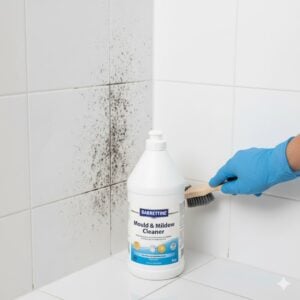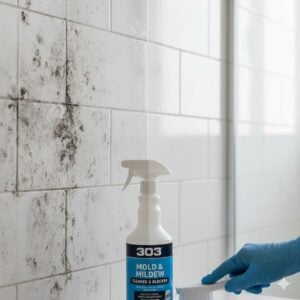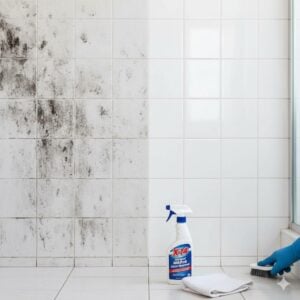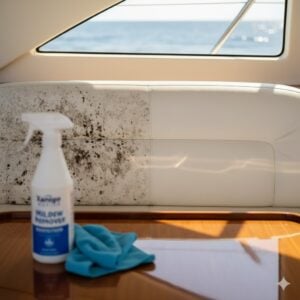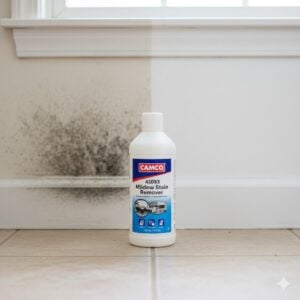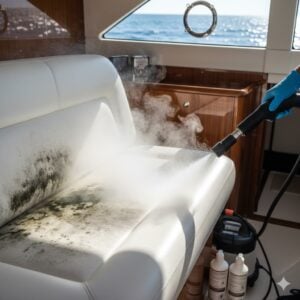Mold in your home is more than just an unsightly issue; it’s a health concern that needs prompt and effective action. Understanding the best ways to do mold removal is key to maintaining a healthy living environment. In this article, we’ll guide you through reliable and efficient methods to eliminate mold and prevent its return. Whether you’re dealing with a small patch or a widespread problem, these strategies will help you keep your home safe, clean, and mold-free. Let’s uncover these solutions together and ensure your home stays a welcoming and healthy space.
[lwptoc]
Table of Contents
ToggleHEPA Filtration Vacuuming
HEPA Filtration Vacuuming is a pivotal technique in the realm of effective mold removal, especially in the context of creating a healthier home environment. This method stands out for its efficiency in capturing and removing the tiniest mold spores from various surfaces, ensuring they do not become airborne and exacerbate the issue. We’ll delve into why HEPA filtration vacuuming is essential, how it works, and its role in comprehensive mold management.
The Role of HEPA Filtration in Mold Removal
HEPA, or High-Efficiency Particulate Air filters, are designed to trap particles as small as 0.3 microns with a 99.97% efficiency. This capability is crucial when dealing with mold spores, which can be as small as 2 to 10 microns in size. Mold spores easily become airborne during cleaning processes and can lead to cross-contamination of other home areas or even cause health problems if inhaled. HEPA vacuuming effectively captures these spores, thereby significantly reducing the risk of mold spores dispersing into the air during the removal process.
HEPA Vacuuming: A Step-by-Step Process
The process of HEPA vacuuming involves several key steps to ensure effective mold removal. Firstly, the area must be contained to prevent the spread of spores. Then, the HEPA vacuum is methodically used over all affected surfaces. This includes not just the visibly mold-infested areas but also nearby surfaces where spores might have settled. It’s important to move slowly and methodically to ensure that all spores are captured.
Versatility and Safety
HEPA vacuuming is a versatile mold removal method suitable for various surfaces, including carpets, upholstery, and walls. Unlike some harsh chemical treatments, HEPA vacuuming is safe and non-intrusive, making it an ideal option for homes, particularly those with children, pets, or individuals with respiratory issues.
Post-Remediation Clean-Up
After mold remediation, thorough clean-up is essential to ensure that all mold spores have been removed. HEPA vacuuming plays a crucial role in this stage. It is used to clean up any remaining spores after the primary mold removal processes have been completed, ensuring the area is thoroughly cleaned and reducing the risk of mold recurrence.
Integration with Other Mold Remediation Techniques
While highly effective, HEPA vacuuming is often used in conjunction with other mold remediation techniques for best results. For instance, after areas are treated with antimicrobial agents or mold-killing solutions, HEPA vacuuming can be used to clean up any residual spores or particles. This integrated approach is key to a comprehensive mold remediation strategy, as highlighted in 5 Essential Steps for Complete Mold Remediation Success.
The Importance of Professional HEPA Vacuuming Services
Due to the specialized nature of HEPA vacuuming equipment and the need for meticulous execution, it’s often best handled by professionals. Expert mold remediation services, such as those offered by Bio-On, ensure that this process is conducted efficiently and safely. Their expertise not only guarantees thorough spore removal but also helps prevent potential health risks associated with mold exposure.
Long-term Benefits for Home Health
Regular use of a HEPA filter vacuum as part of your home cleaning routine can also contribute to a healthier living environment. By capturing a wide range of allergens, including mold spores, dust mites, and pollen, HEPA vacuuming can significantly improve indoor air quality over time.
Antimicrobial Treatments in Mold Removal
Antimicrobial treatments are a cornerstone in the battle against mold in homes, playing a crucial role in both eradicating existing mold and preventing its future growth. We’ll explore the importance of antimicrobial treatments in mold remediation, how they work, and their role in ensuring a healthier home environment.
Understanding Antimicrobial Treatments Antimicrobial treatments involve the application of substances designed to kill or inhibit the growth of microorganisms like mold, bacteria, and viruses. In the context of mold removal, these treatments are particularly effective as they reach beyond surface-level cleaning, targeting mold at its root. This is especially crucial considering that mold can penetrate porous surfaces, where merely cleaning the visible mold is insufficient.
The Process of Applying Antimicrobial Treatments The application of antimicrobial agents is a precise process that typically follows initial cleaning and mold removal steps. Once the visible mold is cleaned, the affected area is treated with antimicrobial agents. These agents can come in various forms, including sprays, foams, or wipes, and are applied directly to the surfaces where mold has been or is likely to grow.
Choosing the Right Antimicrobial Agent The choice of antimicrobial agent depends on the specific mold type and the area being treated. Professionals like those at Bio-On assess the situation and select the most effective agent for each case. Some agents are more suitable for porous surfaces like wood or drywall, while others are designed for non-porous surfaces like metal or plastic.
Safety and Efficacy Safety is a paramount concern when using antimicrobial treatments. Professional mold remediation services ensure that the products used are not only effective against mold but also safe for occupants of the home. This includes choosing agents with low toxicity levels and ensuring that the treated area is properly ventilated during and after application.
Role in Preventing Future Mold Growth One of the most significant advantages of antimicrobial treatments is their role in preventing future mold growth. By creating an environment that’s inhospitable to mold, these treatments help to keep the treated areas mold-free for extended periods. This preventative aspect is crucial in areas of the home that are prone to dampness and moisture, where mold is more likely to recur.
Integrating Antimicrobial Treatments with Other Mold Remediation Techniques For comprehensive mold remediation, antimicrobial treatments are often used alongside other methods. For instance, following HEPA filtration vacuuming, antimicrobial treatments provide an additional layer of protection, ensuring that any remaining mold spores are eradicated. This integrated approach is key to effective and long-lasting mold remediation.
The Need for Professional Application The application of antimicrobial treatments is a task best left to professionals. Experts in mold remediation have the necessary knowledge and tools to apply these treatments safely and effectively. They can also advise on the best course of action for each specific mold situation, as seen in 3 Unbeatable Mold Remediation Services for Peace of Mind.
Moisture Reduction and Control
Moisture reduction and control are critical components in the battle against mold in homes. Now, we’ll delve into the significance of managing moisture levels, the techniques involved, and how they contribute to a mold-free and healthier home environment.
Understanding the Link Between Moisture and Mold
Mold growth is inextricably linked to moisture. Whether it’s due to high humidity, leaks, or condensation, the presence of excess moisture creates an ideal breeding ground for mold. Addressing moisture issues is, therefore, a fundamental aspect of effective mold prevention and removal.
Identifying Sources of Moisture
The first step in moisture control is identifying the sources of excess moisture. Common culprits include leaking pipes, roof leaks, poor drainage, and high indoor humidity. In humid climates, like many regions in the UAE, the challenge is amplified, making moisture control even more crucial. Regular inspections of plumbing, roofs, and basements are essential to detect and address these moisture sources promptly.
Utilizing Dehumidifiers
In areas where natural humidity levels are high or in spaces like basements and bathrooms where moisture accumulates, using dehumidifiers can be highly effective. These devices help maintain a drier environment by removing excess moisture from the air, thereby creating conditions less favorable for mold growth.
Improving Ventilation
Proper ventilation is key in controlling moisture levels. This can be achieved through simple actions like using exhaust fans in kitchens and bathrooms and ensuring that vents are clean and unblocked. Opening windows regularly to allow for air circulation also helps in reducing indoor humidity levels.
Addressing Condensation
Condensation on windows, pipes, and walls can contribute to mold growth. Insulating pipes, increasing air circulation, and maintaining a consistent indoor temperature can help reduce condensation.
Repairing Leaks Promptly
Leaks are a major source of unwanted moisture. Regular maintenance to check for and repair any leaks in roofing, plumbing, or other areas is vital. Even minor leaks can lead to significant mold problems if left unattended.
Using Moisture Barriers
In certain areas of a home, such as crawl spaces, using moisture barriers can be effective. These barriers help prevent ground moisture from entering the home and contributing to mold growth.
Advanced Mold Remediation Technology
Advanced technology in mold remediation involves a range of tools and techniques designed to detect, remove, and prevent mold more efficiently. These technologies not only ensure thorough removal but also help in identifying the underlying causes of mold growth, enabling more effective and long-lasting solutions.
1. Thermal Imaging for Mold Detection One of the key advancements in mold remediation technology is thermal imaging. Thermal cameras can detect temperature differences in walls, ceilings, and floors, revealing hidden moisture problems that are not visible to the naked eye. This technology is invaluable in identifying potential mold hotspots, allowing for targeted remediation efforts.
2. Moisture Meters and Sensors Moisture meters and sensors provide accurate measurements of moisture content in various materials like wood, drywall, and concrete. These tools are crucial in determining the extent of water damage and the potential for mold growth, guiding the remediation process in a data-driven manner.
3. HEPA Filtration Systems High-Efficiency Particulate Air (HEPA) filtration systems are essential in mold remediation. These systems are used to filter out mold spores from the air, preventing them from spreading during the remediation process and ensuring a cleaner indoor air quality post-remediation.
4. Antimicrobial Coatings and Agents The application of antimicrobial coatings and agents is another facet of advanced mold remediation. These products are applied to surfaces after mold removal to kill any remaining spores and inhibit future mold growth. They provide an extra layer of protection, particularly in areas prone to moisture.
5. Negative Air Pressure and Air Scrubbers Creating negative air pressure in the remediation area, using air scrubbers, is a critical technology in containing mold spores. Air scrubbers with HEPA filters clean the air within the containment area, ensuring that mold spores do not escape into other parts of the home during the remediation process.
6. Ultraviolet (UV) Light Technology Ultraviolet light technology is emerging as a powerful tool in mold remediation. UV light can effectively kill mold spores and bacteria, making it a valuable addition to traditional remediation techniques, especially in hard-to-reach areas.
Professional Mold Assessment and Remediation
A professional mold assessment goes beyond a simple visual inspection. It involves a comprehensive evaluation of the home to identify all areas affected by mold. Experts use advanced tools like thermal imaging and moisture meters, as highlighted in 5 Essential Steps for Complete Mold Remediation Success, to detect hidden mold that might not be visible to the naked eye. This thorough assessment ensures that the remediation process addresses all affected areas, preventing the recurrence of mold.
1. Detailed Inspection and Sampling Professionals conduct detailed inspections and take samples for laboratory analysis to determine the types of mold present and the severity of the infestation. This step is crucial for developing an effective remediation strategy tailored to the specific mold problem in the home.
2. Accurate Identification of Moisture Sources Identifying the source of moisture that contributes to mold growth is essential. Professionals are skilled at pinpointing these sources, which could range from leaky pipes to high humidity levels. By addressing these underlying issues, the risk of future mold growth is significantly reduced.
Preventive Maintenance and Regular Inspections
Preventive maintenance involves a series of routine actions aimed at keeping homes in optimal condition to ward off mold growth. This includes addressing any environmental factors that might encourage mold development, such as moisture issues, poor ventilation, and accumulation of dust and organic materials.
1. Moisture Management Effective moisture management is at the heart of preventive maintenance. This involves fixing leaks, ensuring proper insulation, using dehumidifiers in high-humidity areas, and maintaining plumbing and HVAC systems to prevent condensation and water accumulation. Consistent efforts to keep the home dry significantly reduce the likelihood of mold growth.
2. Enhancing Ventilation Improving air circulation within the home is another key aspect of preventive maintenance. Proper ventilation, especially in areas like kitchens, bathrooms, and basements, helps to dissipate moisture and reduce humidity levels. Simple practices such as using exhaust fans and opening windows can make a substantial difference.
3. Regular Cleaning Regular cleaning plays a pivotal role in mold prevention. Dust and organic debris can provide food for mold, and keeping surfaces clean reduces the chances of mold taking hold. Special attention should be paid to areas where mold is most likely to grow, such as bathrooms and kitchens.
Why Bio-On is the All-in-One Solution for Mold Removal in UAE
Bio-On stands out as a leading all-in-one solution for mold removal in the UAE, thanks to its comprehensive approach and deep understanding of local climate challenges. Here’s why Bio-On is the top choice:
1. Expertise in UAE’s Climate: Bio-On’s professionals are well-versed in the UAE’s unique environmental conditions, tailoring mold removal strategies effectively.
2. Comprehensive Services: From initial assessments to thorough remediation, Bio-On covers all aspects of mold removal, ensuring a complete solution.
3. Advanced Technology: Utilizing the latest technology, like thermal imaging, Bio-On ensures comprehensive mold detection and removal.
4. Trained Professionals: Their team of experts is skilled in safe and effective mold removal methods, protecting the health of homeowners.
5. Preventive Measures: Beyond removal, Bio-On focuses on long-term prevention, offering advice and solutions to keep homes mold-free.
6. Educational Support: Bio-On believes in empowering homeowners with knowledge about mold prevention, providing ongoing support and guidance.
Conclusion
In conclusion, mold removal is a critical aspect of maintaining a healthy and safe living environment, especially in regions like the UAE, where the climate can foster mold growth. The techniques and strategies discussed in this article – ranging from HEPA filtration vacuuming and antimicrobial treatments to moisture reduction, advanced remediation technology, and professional assessment – form a comprehensive approach to tackling mold effectively. Each method plays a unique role in not only eradicating existing mold but also in preventing its recurrence, ensuring a long-term solution to this common problem.
Moreover, the importance of professional expertise, as provided by companies like Bio-On, cannot be overstated. Their specialized knowledge, advanced tools, and commitment to safety make them invaluable in the fight against mold. By integrating these advanced mold removal techniques with regular preventive maintenance and inspections, homeowners can significantly enhance the quality of their indoor environment.
Ultimately, the goal is to create a mold-free space where families can thrive without health risks associated with mold exposure. Implementing these effective mold removal techniques is a step forward in ensuring the longevity and wellbeing of both the occupants and the structure of the home itself. For those facing mold challenges, embracing these strategies offers a path to restoring and maintaining a clean, healthy home environment.








